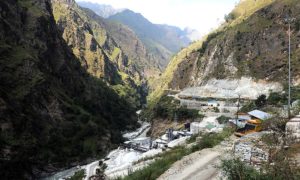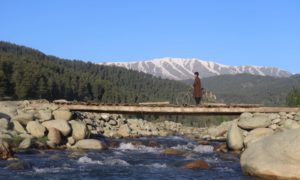Massive flash floods and landslides that ravaged Kerala prompted several volunteers to go to“God’s own country” with rescue and relief. One among them was a Samaritan from Srinagar who went as welfare NGO Athrout’s volunteer and returned home witnessing an evident difference between the state response towards the 2018 flood-ravaged Kerala and the 2014 flood-torn Kashmir.
The day TV channels and social media began broadcasting flood ravaged images of Kerala, I became restless to provide a helping hand. That’s what we’ve been doing at our welfare NGO called Athrout since a long now. Amid cries of helplessness and apathy, I waited for the nod from our chief—Ameer—to go with relief items, mostly medicine, for the flood-affected people of Kerala.
On August 24, 2018, I along with other volunteer started for Kerala. After reaching Bangalore, we collected medicines and began moving towards our distressed destination by road.
ALSO READ: To help Kerala flood victims, Athrout sends aid, volunteers, doctors
By sundown, we were in Kerala’s Wyanad district, where overwhelming scenes greeted us.
It was as if a war-torn country was getting humanitarian help on war-footing. But instead of bombs and missiles, it was the murky water that had devastated “God’s own country” and filled it with grief and misery.

At a collection centre, the unfolding scenes were a mix of rage and resurgence. People were broken, yet buoyant. Their lifetime income had turned into slush in front of their eyes, and yet, they were up against the tragedy, exploring ways to help each other.
Our relief material was warmly received by the camp officials. Amid desolation, their smiles and gratitude were quite pervasive, hinting at the rebuilding spirit among Keralites.
ALSO READ: The advent of ‘Athrout’ as a helping hand
While mapping the crisis, I came to know that the major part of relief is being distributed by the state administration itself. In that hour of need, the Kerala government was standing by its people and professionally handling the crisis. They had set up sub-centres to cater to specific needs of the affected zones. Their We Shall Overcome spirit was heartening.
We were given a local volunteer namely Shyjal for getting in contact with the flood-affected people. During our interaction, we learned how the flash flood had caught the people napping, without giving them any chance to escape. The flood horrors brought home the nightmare of September 2014, when a brimmed Jhelum spilled over, and made a haunting pool out of the Sun City, and other parts of the valley.

2014 Kashmir Floods.
With these thoughts, we visited a nearby school in which more than 100 families had taken shelter. They were akin to those makeshift camps of Kashmir where flood-displaced people had taken refuge in the fall of 2014.
The following morning, we visited a wrecked tea estate. It was hit by flash floods, epicentre of which was located just 5kms from the place. The ravaged sight had a stark resemblance with the Kashmir floods: Wasted homes, collapsed structures, muddy vehicles, uprooted trees and muck-filled spots.
With a sense of rebuilding, however, the local village headmen were taking note of peoples’ need and running here and there to address them. Undoubtedly, the natural calamity had united Keralites and had lessons for others.

The devastated tea estate.
Compared to 2014 floods back home, it was a totally different experience.
When the major parts of the Valley, especially the summer capital Srinagar, submerged in floods, hardly anyone from the administration came for peoples’ rescue.
In fact, the state officialdom was one of the first things which disappeared when floods struck. There were no safety measures in place. In that moment of distress, only local youth, welfare bodies and NGOs helped people by one or the other way.
ALSO READ: Amid official-broker-buyer nexus, 2014 floods often return to haunt Kashmir
Unlike Kashmir, however, Kerala—despite suffering from the massive tragedy—responded to the floods in a very synergic manner, without letting any agency to take credit for the rescue and relief operations.
Every state, I reckon, has to be prepared for such kind of calamities by raising its volunteer strength. The volunteers should make a group and take specific information on disaster management and training like swimming, for the rescue operations. Most importantly, as Kerala beautifully demonstrated, every state should’ve a volunteer group coordination that can reach the affected place without boundaries, caste, creed, and colour.
While we can’t prevent natural calamities, we can surely change our response towards them. And that’s how Kerala is handling its crisis.
Bilal Sofi is a volunteer of Athrout, a Kashmir based Humanitarian Organization.
Like this story? Producing quality journalism costs. Make a Donation & help keep our work going.














